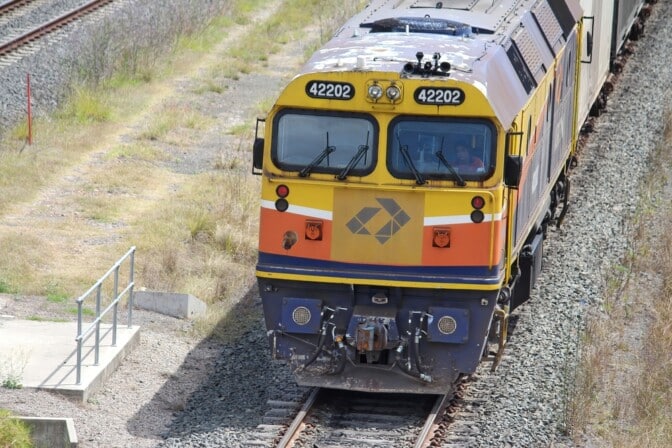The Australasian Railway Association (ARA) has made a submission to the New South Wales Freight Policy Reform Program, including that shifting 30 per cent of the state’s freight on to rail would boost the economy.
Among the 44 recommendations made by the ARA in its submission is the need to establish the mothballed Bureau of Freight Statistics to enable regular, public reporting by New South Wales agencies of freight performance and progress on delivering the renewed freight strategy.
The submission also said the current passenger priority and peak curfew requirements on the metropolitan shared rail network are “challenging and excessively restrictive”.
ARA CEO, Caroline Wilkie, said that it was vital that New South Wales developed a coordinated, strategic approach with specific targets to increase the use of rail freight.
NSW Ports figures show that just 17 per cent of freight arriving at port for export is on rail, despite numerous strategies to increase mode share. In addition this this, ARA research shows that only two per cent of freight on Australia’s busiest corridor between Melbourne and Sydney travels by rail.
“The poor utilisation of rail in the New South Wales freight task has been an issue for decades and strategies to date have not resulted in rail being any more competitive in the containerised market,” Ms Wilkie said.
“This is despite the obvious, and enormous, economic, safety and environmental benefits that getting more freight on rail delivers to the community.
“An urgent overhaul of the New South Wales freight strategy is critical to support the efficiency, productivity and competitiveness of rail freight services and position rail to thrive as an important part of New South Wales and national supply chains.”
ARA research shows that a ten per cent mode shift away from road to rail between major capital cities in Australia will reduce the social costs, crashes and accidents and health costs from emissions, with total estimated benefits of more than $700 million per year.
“For New South Wales to play its part in reaching net zero emissions targets, it is essential we ease pressure on the state’s congested roads and enable more freight to travel by rail, which is 16 times less carbon intensive than road freight.”
The ARA submission said that freight policy responsibility is “scattered throughout various bodies in the New South Wales Government, which has prevented the development of meaningful rail freight policy”.
It cites the 2021 New South Wales Auditor-General’s Rail Freight and Greater Sydney report that concluded that New South Wales would struggle to meet increasing demand for freight movements unless a more coordinated approach is taken to increase rail’s mode share with targets to improve efficiency and capacity.
The ARA submission states that, “The industry believes that the Auditor-General’s report, combined with similar experiences in other jurisdictions, provides a clear indication that policy settings need to change for rail freight to play a greater role in meeting the growing freight task at our ports.
“The inflexible application of passenger priority and peak curfew requirements is also challenging and excessively restrictive. They have the effect of increasing the cost of rail freight services by reducing rollingstock utilisation and ability to maximise use of rail network capacity and reduces reliability by creating additional delays for freight trains.”
Current share of the New South Wales freight task on rail is high when considering mining and agricultural bulk exports, but modest across contestable freight markets, including containerised freight.
The ARA has said that New South Wales should immediately prioritise supporting the national aim of achieving rail system interoperability of operating rules, infrastructure and operational standards and systems to improve the efficiency and safety of the network.
The submission states that, “Rail freight in Australia is considerably constrained by the differences which exist between jurisdictions and intra-state networks. A lack of interoperability across the country is the single most significant drain on productivity for the rail freight sector, directly contributes greatly to the cost of operating rail freight services, reduces operational efficiency and flexibility, dampens the uptake of new technology and pace of innovation, and ultimately hampers the ability to compete with other transport modes.”
Image: Rose Marinelli/shutterstock.com

